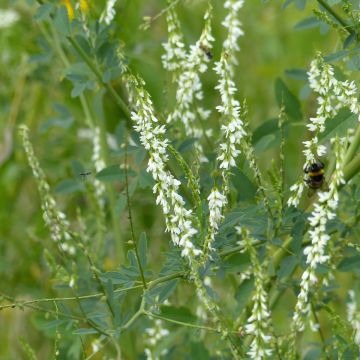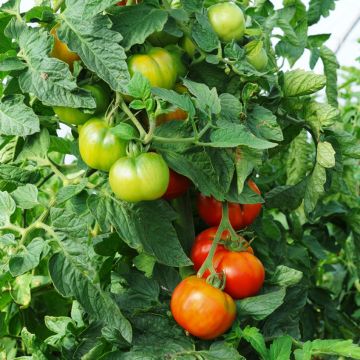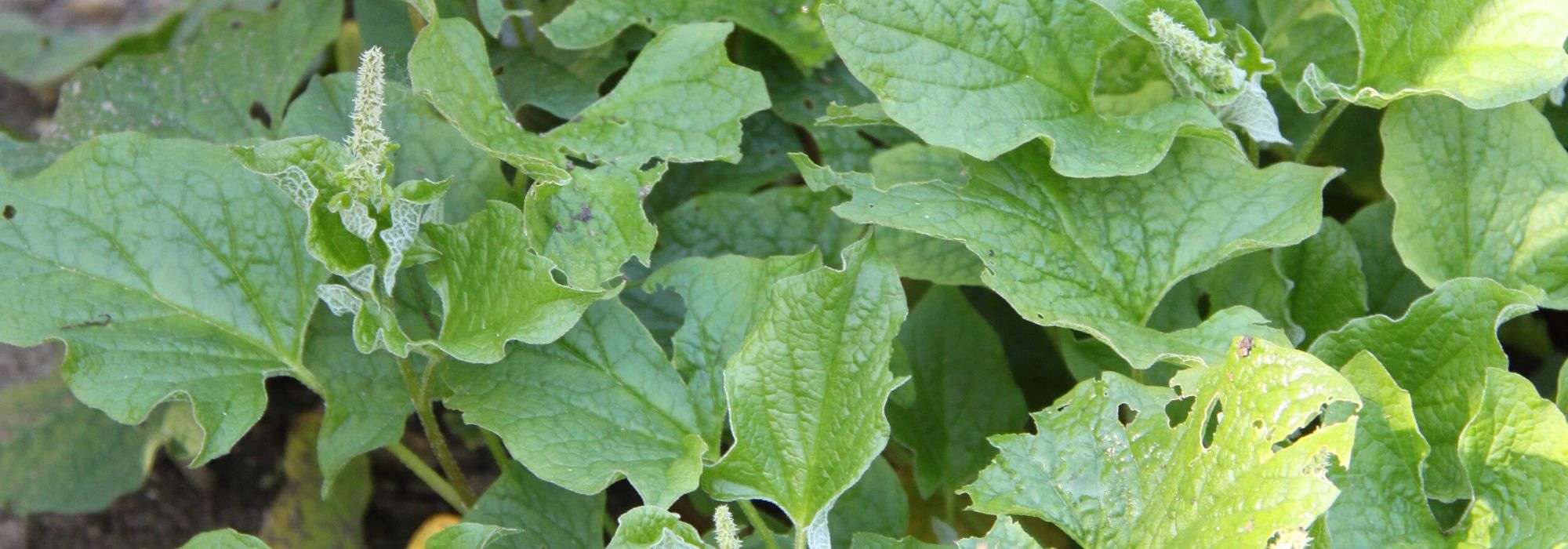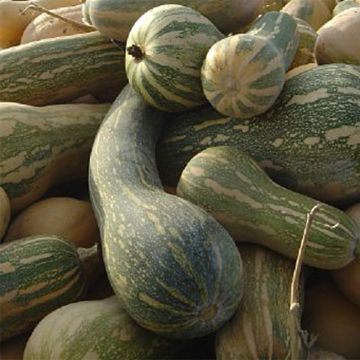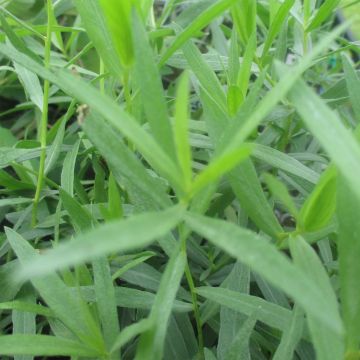

Chénopode Bon Henri - Chenopodium bonus-henricus
Good King Henry - Chenopodium bonus-henricus
Chenopodium bonus-henricus
Good King Henry, Poor-man's Asparagus, Lincolnshire Spinach, Perennial Goosefoot
Special offer!
Receive a €20 voucher for any order over €90 (excluding delivery costs, credit notes, and plastic-free options)!
1- Add your favorite plants to your cart.
2- Once you have reached €90, confirm your order (you can even choose the delivery date!).
3- As soon as your order is shipped, you will receive an email containing your voucher code, valid for 3 months (90 days).
Your voucher is unique and can only be used once, for any order with a minimum value of €20, excluding delivery costs.
Can be combined with other current offers, non-divisible and non-refundable.
Why not try an alternative variety in stock?
View all →This plant carries a 6 months recovery warranty
More information
We guarantee the quality of our plants for a full growing cycle, and will replace at our expense any plant that fails to recover under normal climatic and planting conditions.
Description
Good King Henry, sometimes called wild spinach, is a vegetable plant grown for its leaves. It is a hardy perennial vegetable, remaining in place for several years: ideal for permaculture. The leaves are consumed cooked, similar to spinach. Plant it in April-May or September-October. Harvesting takes place in spring and autumn.
Good King Henry is grown for its leaves, which are consumed cooked, similar to spinach. This hardy and perennial plant was frequently gathered during the medieval period. Good King Henry exists in the wild, preferably at higher altitudes, in ancient inhabited places or along paths, where the soil is rich in nitrogen. There are two versions regarding the origin of its name. The name may refer to Henry III of Navarre, future King of France Henry IV, who greatly appreciated this vegetable. Its name could also come from Old German, 'gut heinrich' (heinrich meaning plants growing spontaneously near houses). Its vermifuge qualities would then have earned it the name Good King Henry, in contrast to the mercury plant called 'bad henry'.
Unlike white goosefoot and giant goosefoot, the Good King Henry remains in place for several years, about 4 to 5 years. The foliage disappears in winter and new buds appear in spring. Flowering, in the form of small spike-like flowers, occurs from June to September. Good King Henry reaches a height of 20 to 60 cm (8 to 24in) when fully mature. It is rich in vitamins A and C, as well as minerals.
Harvesting: pick the leaves as needed, preferably in the morning. Harvesting takes place in spring and autumn, when the leaves are the most tender.
Storage: the leaves should be consumed quickly after harvesting, ideally on the same day.
Gardener's tip: To limit watering, we recommend mulching the soil in summer with thin successive layers of grass clippings, if possible mixed with dead leaves. This protection, which keeps the soil moist, also limits weed growth.
Good King Henry - Chenopodium bonus-henricus in pictures


Harvest
Plant habit
Foliage
Botanical data
Chenopodium
bonus-henricus
Chenopodiaceae
Good King Henry, Poor-man's Asparagus, Lincolnshire Spinach, Perennial Goosefoot
Central Europe
Perennial
Other Vegetable seeds from A to Z
View all →Planting and care
Sowing
In autumn, preferably in October, or in spring in March and April, dig deep furrows of 2 cm (1in) spaced 40 to 50 cm (16 to 20in) apart along the edge of the vegetable garden, in an area where the goosefoots can stay for 4 to 5 years. Then place the seeds at the bottom of the furrow, cover with fine soil and firm down with the back of a rake, then water.
Germination takes place in 12 to 15 days. The temperature should be above 15°C (59°F). One month after sowing, when the plants have 4 to 5 leaves, thin out the plants, leaving one goosefoot every 35 cm (14in).
Maintenance
Goosefoot is sensitive to drought, which encourages early flowering at the expense of leaf production.
From May onwards, spread a layer of dead leaves as mulch to keep the soil moist. Water generously at the base throughout the summer.
Seedlings
Care
Intended location
Planting & care advice
This item has not been reviewed yet - be the first to leave a review about it.
Similar products
Haven't found what you were looking for?
Hardiness is the lowest winter temperature a plant can endure without suffering serious damage or even dying. However, hardiness is affected by location (a sheltered area, such as a patio), protection (winter cover) and soil type (hardiness is improved by well-drained soil).

Photo Sharing Terms & Conditions
In order to encourage gardeners to interact and share their experiences, Promesse de fleurs offers various media enabling content to be uploaded onto its Site - in particular via the ‘Photo sharing’ module.
The User agrees to refrain from:
- Posting any content that is illegal, prejudicial, insulting, racist, inciteful to hatred, revisionist, contrary to public decency, that infringes on privacy or on the privacy rights of third parties, in particular the publicity rights of persons and goods, intellectual property rights, or the right to privacy.
- Submitting content on behalf of a third party;
- Impersonate the identity of a third party and/or publish any personal information about a third party;
In general, the User undertakes to refrain from any unethical behaviour.
All Content (in particular text, comments, files, images, photos, videos, creative works, etc.), which may be subject to property or intellectual property rights, image or other private rights, shall remain the property of the User, subject to the limited rights granted by the terms of the licence granted by Promesse de fleurs as stated below. Users are at liberty to publish or not to publish such Content on the Site, notably via the ‘Photo Sharing’ facility, and accept that this Content shall be made public and freely accessible, notably on the Internet.
Users further acknowledge, undertake to have ,and guarantee that they hold all necessary rights and permissions to publish such material on the Site, in particular with regard to the legislation in force pertaining to any privacy, property, intellectual property, image, or contractual rights, or rights of any other nature. By publishing such Content on the Site, Users acknowledge accepting full liability as publishers of the Content within the meaning of the law, and grant Promesse de fleurs, free of charge, an inclusive, worldwide licence for the said Content for the entire duration of its publication, including all reproduction, representation, up/downloading, displaying, performing, transmission, and storage rights.
Users also grant permission for their name to be linked to the Content and accept that this link may not always be made available.
By engaging in posting material, Users consent to their Content becoming automatically accessible on the Internet, in particular on other sites and/or blogs and/or web pages of the Promesse de fleurs site, including in particular social pages and the Promesse de fleurs catalogue.
Users may secure the removal of entrusted content free of charge by issuing a simple request via our contact form.
The flowering period indicated on our website applies to countries and regions located in USDA zone 8 (France, the United Kingdom, Ireland, the Netherlands, etc.)
It will vary according to where you live:
- In zones 9 to 10 (Italy, Spain, Greece, etc.), flowering will occur about 2 to 4 weeks earlier.
- In zones 6 to 7 (Germany, Poland, Slovenia, and lower mountainous regions), flowering will be delayed by 2 to 3 weeks.
- In zone 5 (Central Europe, Scandinavia), blooming will be delayed by 3 to 5 weeks.
In temperate climates, pruning of spring-flowering shrubs (forsythia, spireas, etc.) should be done just after flowering.
Pruning of summer-flowering shrubs (Indian Lilac, Perovskia, etc.) can be done in winter or spring.
In cold regions as well as with frost-sensitive plants, avoid pruning too early when severe frosts may still occur.
The planting period indicated on our website applies to countries and regions located in USDA zone 8 (France, United Kingdom, Ireland, Netherlands).
It will vary according to where you live:
- In Mediterranean zones (Marseille, Madrid, Milan, etc.), autumn and winter are the best planting periods.
- In continental zones (Strasbourg, Munich, Vienna, etc.), delay planting by 2 to 3 weeks in spring and bring it forward by 2 to 4 weeks in autumn.
- In mountainous regions (the Alps, Pyrenees, Carpathians, etc.), it is best to plant in late spring (May-June) or late summer (August-September).
The harvesting period indicated on our website applies to countries and regions in USDA zone 8 (France, England, Ireland, the Netherlands).
In colder areas (Scandinavia, Poland, Austria...) fruit and vegetable harvests are likely to be delayed by 3-4 weeks.
In warmer areas (Italy, Spain, Greece, etc.), harvesting will probably take place earlier, depending on weather conditions.
The sowing periods indicated on our website apply to countries and regions within USDA Zone 8 (France, UK, Ireland, Netherlands).
In colder areas (Scandinavia, Poland, Austria...), delay any outdoor sowing by 3-4 weeks, or sow under glass.
In warmer climes (Italy, Spain, Greece, etc.), bring outdoor sowing forward by a few weeks.

































